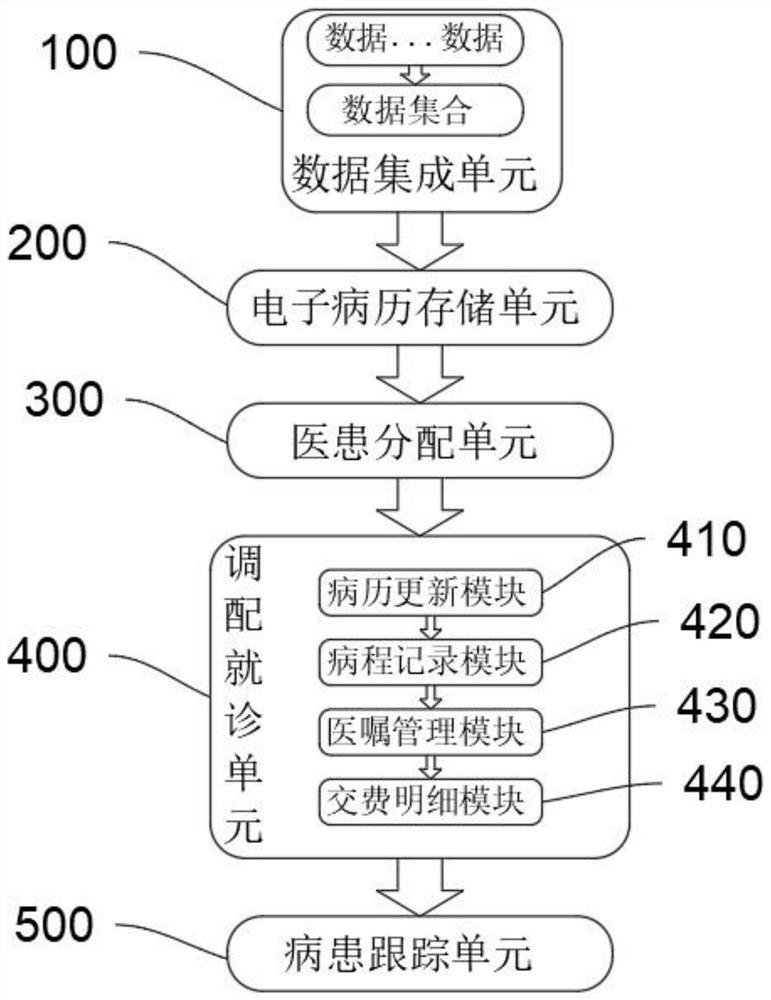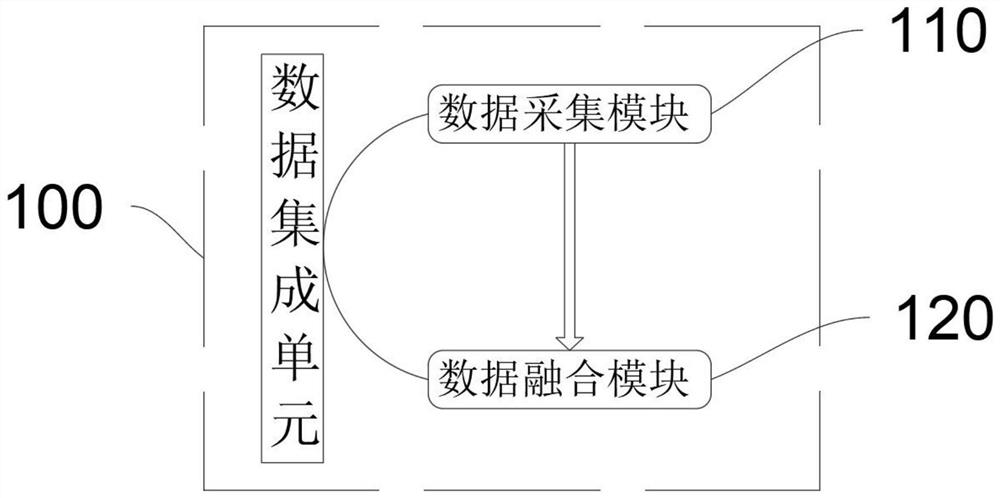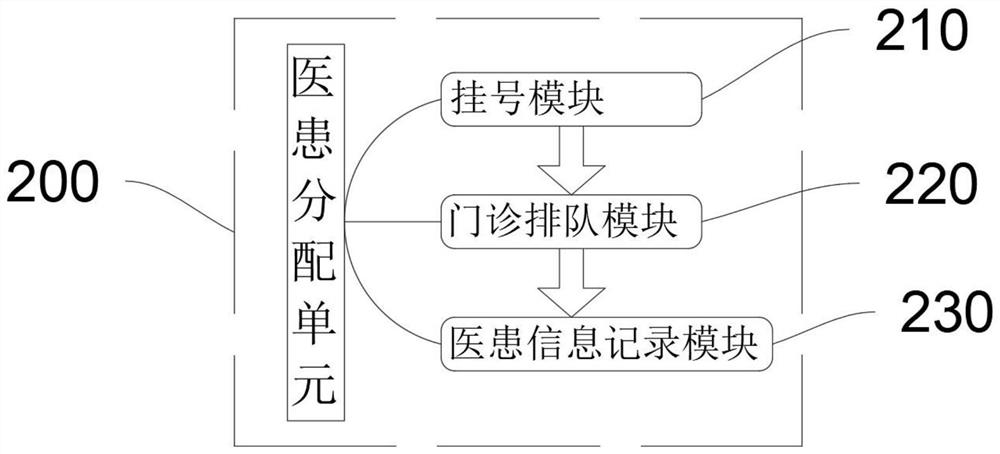Smart hospital intelligent emergency treatment system based on big data and core algorithm
A core algorithm and big data technology, applied in patient-specific data, medical automated diagnosis, computer-aided medical procedures, etc., can solve the inconvenience of patients asking doctors anytime and anywhere, unable to quickly understand both patients and patients, and easily missing the best treatment time Problems such as faults can be solved to prolong the network life cycle, reduce maintenance costs, and improve the efficiency of emergency rescue
- Summary
- Abstract
- Description
- Claims
- Application Information
AI Technical Summary
Problems solved by technology
Method used
Image
Examples
Embodiment 1
[0076] see Figure 1-Figure 4 As shown, the present embodiment provides a smart hospital intelligent emergency system based on big data and core algorithms, including a data integration unit 100, an electronic medical record storage unit 200, a doctor-patient allocation unit 300, a deployment consultation unit 400 and a patient tracking unit 500;
[0077] The data integration unit 100 is used to logically integrate the data in several scattered patient condition data sources in the big data into a unified data set;
[0078] The electronic medical record storage unit 200 is used to store the patient's medical treatment situation data at the client end, and enters the data information in electronic form;
[0079] The electronic medical record storage unit 200 adopts the following steps to realize:
[0080] When receiving the electronic medical record storage request, determine the target digital certificate indicated by the user identification carried in the electronic medical ...
Embodiment 2
[0142] The difference from Embodiment 1 is that the location positioning module 510 adopts the RSSI positioning algorithm, and its steps include:
[0143] Get the dynamic path decay index
[0144] In the j-th gait cycle, after receiving the positioning request of the pedestrian mobile node, the beacon node n1 communicates with the nearest beacon nodes n2 and n3 respectively, and records the RSSI information between n1 and n2, n3 and distance information d n1n2 、d n1n3 ,pass
[0145]
[0146] calculate
[0147] Decay exponent via dynamic path Calculate the position information of the node to be located (x βj ,y βj ).
[0148] Replace the distance and RSSI value between beacon node 1 and beacon node 3 with the distance and RSSI value between beacon node 1 and the node to be located in the jth gait cycle, and then transform according to the logarithmic property to obtain the formula :
[0149]
[0150] In the formula: d n1n2 Respectively represent the distan...
PUM
 Login to View More
Login to View More Abstract
Description
Claims
Application Information
 Login to View More
Login to View More - R&D
- Intellectual Property
- Life Sciences
- Materials
- Tech Scout
- Unparalleled Data Quality
- Higher Quality Content
- 60% Fewer Hallucinations
Browse by: Latest US Patents, China's latest patents, Technical Efficacy Thesaurus, Application Domain, Technology Topic, Popular Technical Reports.
© 2025 PatSnap. All rights reserved.Legal|Privacy policy|Modern Slavery Act Transparency Statement|Sitemap|About US| Contact US: help@patsnap.com



